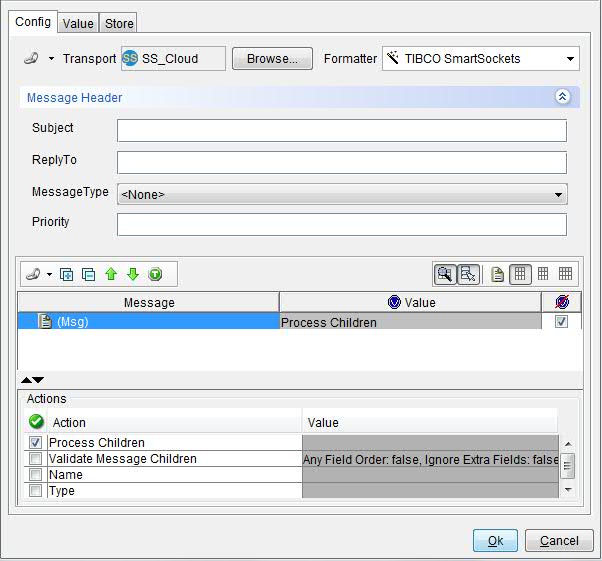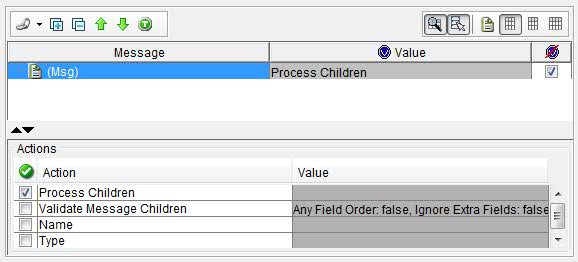Sending SmartSockets messages
Sending messages by using SmartSockets involves configuring the subscriber options, configuring the message content, and optional filtering.
About this task
When publishing by using SmartSockets, you must configure the message header and the message body.

Procedure
-
Configure the SmartSockets header.
SmartSockets header information is configured under the Message Header area.
The SmartSockets header options are described in the following table:
Option Description Subject The subject of the message that is being published. ReplyTo The destination or subject where a reply to the messages is sent. MessageType The Message Type of the messages to publish, which could be any of the following: alert, any, boolean_data, cancel_alert, cancel_warning, client_auth_challenge_call, client_auth_challenge_result. Priority Any integer from 0 to 65535, the priority identifies the level of importance of a message. The greater the number, the higher the importance. Priority determines the order in which a message is processed after it is received. It does not affect the order in which messages are published. When a message is sent to a process through a connection, it is placed in the connection message queue of the receiving process in priority order. Note: For more information, see your TIBCO SmartSockets documentation about message header properties. -
Configure the SmartSockets message body.
The contents and structure of a SmartSockets message body can be configured like any other message in HCL DevOps Test Integrations and APIs (Test Integrations and APIs).

Results
For more information, see API Tester Reference.
